-
 Bitcoin
Bitcoin $105,278.9859
4.61% -
 Ethereum
Ethereum $2,414.7741
8.20% -
 Tether USDt
Tether USDt $1.0007
0.05% -
 XRP
XRP $2.1600
7.53% -
 BNB
BNB $639.5433
3.75% -
 Solana
Solana $144.3830
9.37% -
 USDC
USDC $1.0001
0.02% -
 TRON
TRON $0.2742
3.84% -
 Dogecoin
Dogecoin $0.1640
8.57% -
 Cardano
Cardano $0.5811
7.49% -
 Hyperliquid
Hyperliquid $37.2466
5.28% -
 Sui
Sui $2.8243
14.84% -
 Bitcoin Cash
Bitcoin Cash $460.8816
2.22% -
 Chainlink
Chainlink $12.9580
11.75% -
 UNUS SED LEO
UNUS SED LEO $9.1359
1.23% -
 Avalanche
Avalanche $18.2302
10.30% -
 Stellar
Stellar $0.2463
7.80% -
 Toncoin
Toncoin $2.9151
7.18% -
 Shiba Inu
Shiba Inu $0.0...01163
9.79% -
 Hedera
Hedera $0.1532
14.01% -
 Litecoin
Litecoin $85.3310
6.29% -
 Monero
Monero $308.8215
2.90% -
 Ethena USDe
Ethena USDe $1.0007
0.03% -
 Polkadot
Polkadot $3.4259
9.42% -
 Dai
Dai $1.0002
0.01% -
 Bitget Token
Bitget Token $4.1742
3.19% -
 Uniswap
Uniswap $6.8272
8.53% -
 Pepe
Pepe $0.0...09939
12.29% -
 Pi
Pi $0.5358
6.03% -
 Aave
Aave $257.3092
12.83%
Does the flag consolidation pattern have a high success rate? How to calculate the target position after the breakthrough?
The flag consolidation pattern in crypto trading signals a potential trend continuation after a brief retracement, offering traders a strategic entry point with measured price targets.
Jun 24, 2025 at 01:14 pm
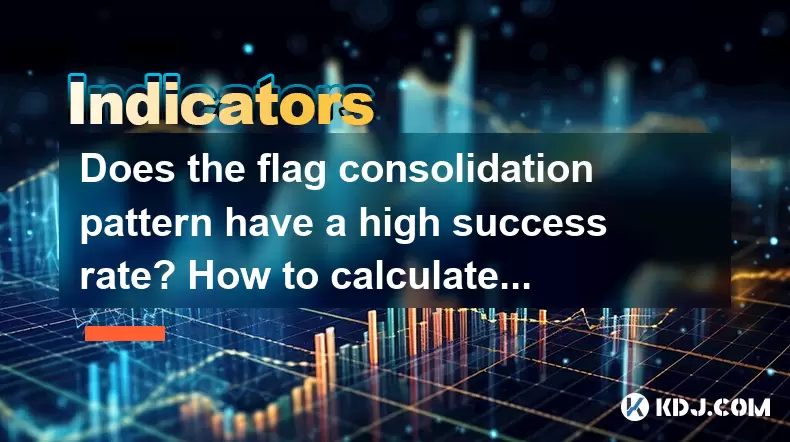
Understanding the Flag Consolidation Pattern in Cryptocurrency Trading
The flag consolidation pattern is a commonly observed technical analysis structure within the cryptocurrency market. It typically appears as a brief pause or retracement following a strong price movement, either upward or downward. This pattern resembles a flag on a pole when plotted on a chart. The "pole" represents the initial sharp move, while the "flag" is the consolidation phase that follows. Traders often look for this formation to anticipate potential continuation moves.
Flag patterns are considered reliable indicators of trend continuation, especially when they occur within strong and established trends. However, their success rate can vary depending on several factors such as market conditions, volume during consolidation, and the clarity of the breakout.
Factors Influencing the Success Rate of the Flag Pattern
To assess whether the flag consolidation pattern has a high success rate, it's essential to consider multiple variables:
- Trend Strength: A stronger preceding trend generally increases the likelihood of a successful breakout.
- Volume During Formation: Decreasing volume during consolidation and a spike upon breakout can signal a more valid pattern.
- Duration of Consolidation: Shorter consolidations tend to be more reliable than prolonged ones.
- Market Volatility: In highly volatile crypto markets, false breakouts are more common, which may lower the pattern’s reliability.
In general, experienced traders note that when these conditions align favorably, the flag pattern tends to have a relatively high probability of success.
Identifying the Breakout Point in a Flag Pattern
A critical aspect of trading the flag consolidation pattern is identifying the moment of breakout. The breakout occurs when the price moves beyond the upper or lower boundary of the consolidation area.
To confirm a valid breakout, traders should look for increased trading volume accompanying the price move. Additionally, using candlestick confirmation (e.g., a close beyond the flag boundary) helps reduce the risk of entering a false breakout trade.
Some traders also use horizontal support/resistance lines or trendlines drawn across the consolidation zone to pinpoint precise breakout levels.
Calculating the Target Position After a Breakout
Once a breakout is confirmed, the next step involves estimating the potential target level for the trade. This is done by measuring the height of the flagpole and projecting it from the breakout point.
Here is how to calculate the target position step-by-step:
- Measure the Flagpole: Identify the distance between the start of the impulse move (before the consolidation) and the highest or lowest point of the flagpole.
- Determine the Breakout Level: Locate the exact price level where the price breaks out of the consolidation zone.
- Project the Target: Add the measured flagpole length to the breakout level in an uptrend or subtract it in a downtrend to determine the projected target.
For example, if the flagpole spans $100 in a bullish move and the breakout occurs at $500, the projected target would be $600.
Practical Application: Using the Flag Pattern in Crypto Trading
Applying the flag pattern effectively requires practice and attention to detail. Here’s a practical guide to incorporating this pattern into your crypto trading strategy:
- Identify Strong Trends: Begin by scanning charts for recent, powerful price movements followed by a tight consolidation phase.
- Draw Accurate Boundaries: Use trendlines to clearly define the upper and lower limits of the consolidation area.
- Wait for Confirmation: Avoid premature entries—wait until the price closes beyond the flag boundaries with significant volume.
- Set Stop-Loss Levels: Place stop-loss orders just below the consolidation zone in a bullish setup or above it in a bearish setup to manage risk.
- Use Measured Targets: Apply the flagpole projection method to set realistic take-profit levels.
This structured approach helps traders avoid emotional decisions and maintain discipline in volatile crypto markets.
Frequently Asked Questions
Q1: Can the flag consolidation pattern appear on any time frame?
Yes, the flag consolidation pattern can appear on all time frames—from minute charts used in scalping to daily or weekly charts used for longer-term trading. However, patterns appearing on higher time frames (like 4-hour or daily) are generally considered more reliable due to reduced noise and better volume representation.
Q2: What are common mistakes traders make when trading flag patterns?
One common mistake is entering trades too early before the breakout is confirmed. Another is failing to adjust stop-loss levels according to volatility or ignoring volume signals. Some traders also ignore broader market context, leading to poor trade selection.
Q3: How does the flag pattern differ from the pennant pattern?
While both are continuation patterns, the key difference lies in their shape. The flag pattern features parallel trendlines forming a rectangular consolidation, whereas the pennant pattern has converging trendlines, making it triangular. Both share similar measuring techniques but differ slightly in appearance and psychology behind the consolidation.
Q4: Is the flag pattern applicable to all cryptocurrencies?
The flag pattern can be applied to most liquid cryptocurrencies such as Bitcoin, Ethereum, and other major altcoins. However, in less liquid or thinly traded tokens, the pattern may not hold well due to erratic price behavior and unreliable volume data.
Disclaimer:info@kdj.com
The information provided is not trading advice. kdj.com does not assume any responsibility for any investments made based on the information provided in this article. Cryptocurrencies are highly volatile and it is highly recommended that you invest with caution after thorough research!
If you believe that the content used on this website infringes your copyright, please contact us immediately (info@kdj.com) and we will delete it promptly.
- Celestia Under Fire: Navigating the $100M FUD Storm
- 2025-06-24 16:45:12
- XLM Price, Bitcoin Solaris, and Returns Prediction: Navigating the Crypto Landscape
- 2025-06-24 16:25:13
- Dogecoin Price Prediction: Will DOGE Bounce Back by June 25?
- 2025-06-24 16:45:12
- Adam Schiff's COIN Act: Curbing Crypto Endorsements and Conflicts of Interest
- 2025-06-24 16:25:13
- Bitcoin, Ethereum, Ceasefire: Crypto Markets React to Unexpected Geopolitical Developments
- 2025-06-24 17:05:12
- PIPE Transactions, On-Chain Protocols, and Market Analysis: A New Era for Crypto?
- 2025-06-24 17:24:16
Related knowledge
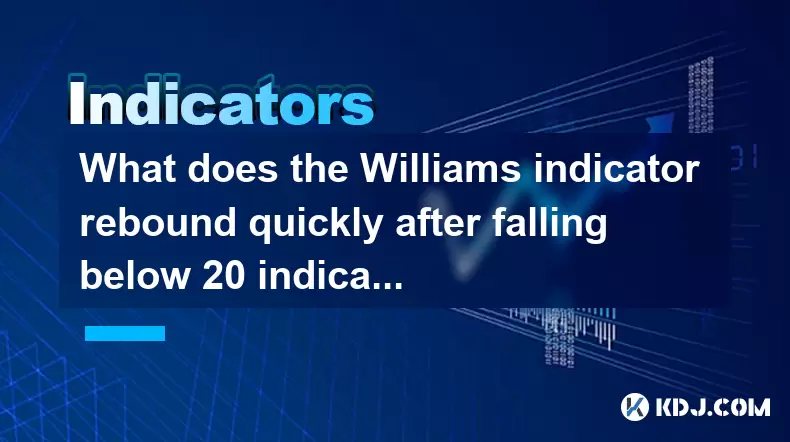
What does the Williams indicator rebound quickly after falling below 20 indicate?
Jun 24,2025 at 04:49pm
Understanding the Williams %R IndicatorThe Williams %R indicator, also known as Williams Percent Range, is a momentum oscillator used in technical analysis to identify overbought and oversold conditions in financial markets, including cryptocurrencies. It was developed by Larry Williams and typically operates on a scale from 0 to -100. In the context of...
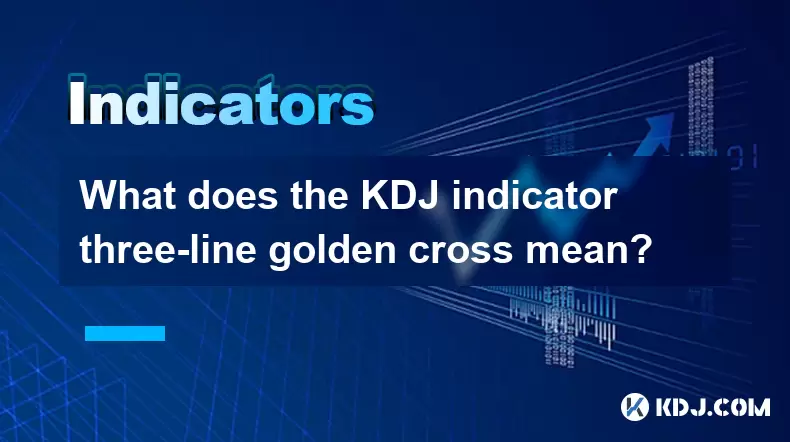
What does the KDJ indicator three-line golden cross mean?
Jun 24,2025 at 05:28pm
Understanding the KDJ Indicator in Cryptocurrency TradingThe KDJ indicator is a technical analysis tool widely used in cryptocurrency trading to identify potential buy and sell signals. It combines elements of two other indicators: the Stochastic Oscillator and the J line, which acts as a signal line. The KDJ consists of three lines — K, D, and J — each...
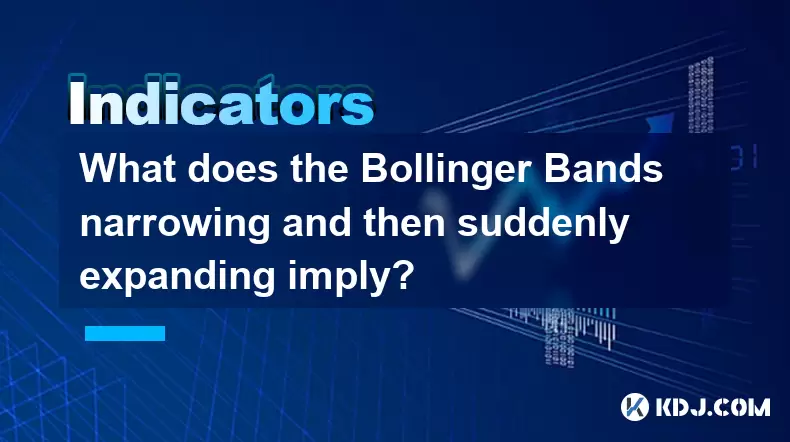
What does the Bollinger Bands narrowing and then suddenly expanding imply?
Jun 24,2025 at 05:56pm
Understanding Bollinger Bands in Cryptocurrency TradingBollinger Bands, a popular technical analysis tool, are widely used in cryptocurrency trading to assess price volatility and potential trend reversals. The indicator consists of three lines: a Simple Moving Average (SMA) in the middle, typically set at 20 periods, with two outer bands that represent...
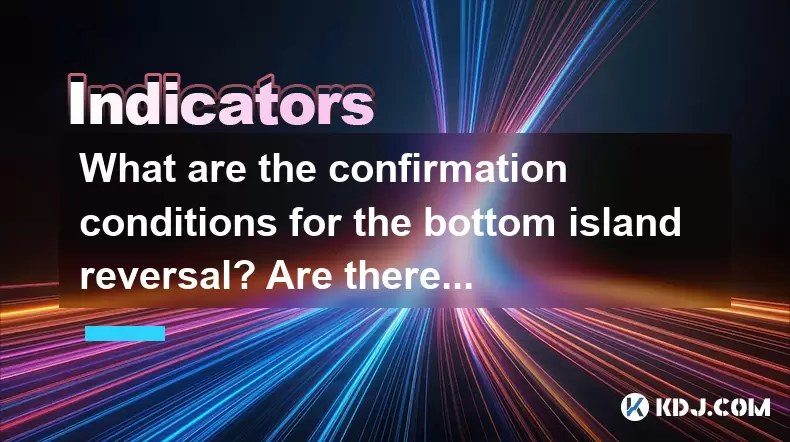
What are the confirmation conditions for the bottom island reversal? Are there many false signals?
Jun 24,2025 at 04:56pm
Understanding the Bottom Island Reversal PatternThe bottom island reversal is a rare but significant candlestick pattern that indicates a potential shift from a downtrend to an uptrend. It typically forms when there's a gap down followed by a gap up, leaving a 'blank' space on the chart — the island — which is isolated from the surrounding price action....
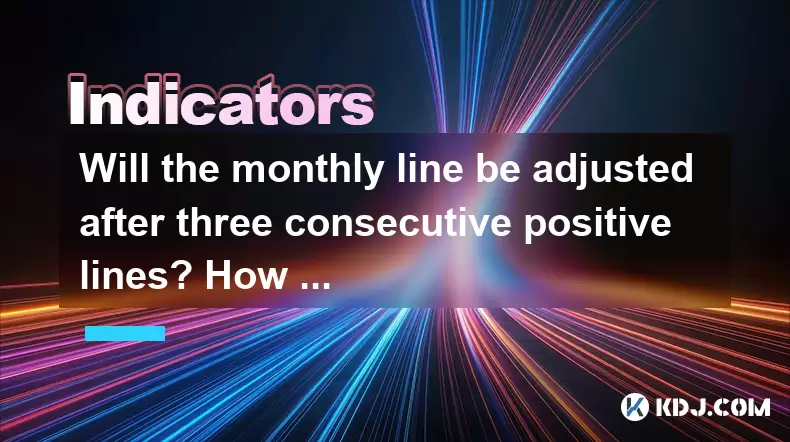
Will the monthly line be adjusted after three consecutive positive lines? How big is the callback range in general?
Jun 24,2025 at 05:21pm
Understanding Monthly Candlestick Patterns in CryptocurrencyIn the realm of cryptocurrency trading, monthly candlestick patterns play a crucial role in analyzing long-term price behavior. A monthly chart provides traders with a macro view of how an asset has performed over extended periods. When observing three consecutive positive (green) candles on th...
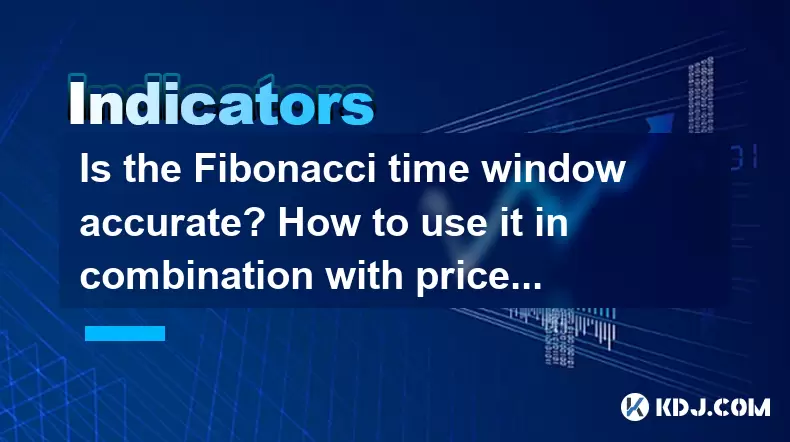
Is the Fibonacci time window accurate? How to use it in combination with price patterns?
Jun 24,2025 at 03:49pm
Understanding the Fibonacci Time Window ConceptThe Fibonacci time window is a technical analysis tool derived from the Fibonacci sequence, commonly used in financial markets, including cryptocurrency trading, to predict potential reversal or continuation points based on time rather than price. Unlike traditional Fibonacci retracement levels that focus o...

What does the Williams indicator rebound quickly after falling below 20 indicate?
Jun 24,2025 at 04:49pm
Understanding the Williams %R IndicatorThe Williams %R indicator, also known as Williams Percent Range, is a momentum oscillator used in technical analysis to identify overbought and oversold conditions in financial markets, including cryptocurrencies. It was developed by Larry Williams and typically operates on a scale from 0 to -100. In the context of...

What does the KDJ indicator three-line golden cross mean?
Jun 24,2025 at 05:28pm
Understanding the KDJ Indicator in Cryptocurrency TradingThe KDJ indicator is a technical analysis tool widely used in cryptocurrency trading to identify potential buy and sell signals. It combines elements of two other indicators: the Stochastic Oscillator and the J line, which acts as a signal line. The KDJ consists of three lines — K, D, and J — each...

What does the Bollinger Bands narrowing and then suddenly expanding imply?
Jun 24,2025 at 05:56pm
Understanding Bollinger Bands in Cryptocurrency TradingBollinger Bands, a popular technical analysis tool, are widely used in cryptocurrency trading to assess price volatility and potential trend reversals. The indicator consists of three lines: a Simple Moving Average (SMA) in the middle, typically set at 20 periods, with two outer bands that represent...

What are the confirmation conditions for the bottom island reversal? Are there many false signals?
Jun 24,2025 at 04:56pm
Understanding the Bottom Island Reversal PatternThe bottom island reversal is a rare but significant candlestick pattern that indicates a potential shift from a downtrend to an uptrend. It typically forms when there's a gap down followed by a gap up, leaving a 'blank' space on the chart — the island — which is isolated from the surrounding price action....

Will the monthly line be adjusted after three consecutive positive lines? How big is the callback range in general?
Jun 24,2025 at 05:21pm
Understanding Monthly Candlestick Patterns in CryptocurrencyIn the realm of cryptocurrency trading, monthly candlestick patterns play a crucial role in analyzing long-term price behavior. A monthly chart provides traders with a macro view of how an asset has performed over extended periods. When observing three consecutive positive (green) candles on th...

Is the Fibonacci time window accurate? How to use it in combination with price patterns?
Jun 24,2025 at 03:49pm
Understanding the Fibonacci Time Window ConceptThe Fibonacci time window is a technical analysis tool derived from the Fibonacci sequence, commonly used in financial markets, including cryptocurrency trading, to predict potential reversal or continuation points based on time rather than price. Unlike traditional Fibonacci retracement levels that focus o...
See all articles
























































































